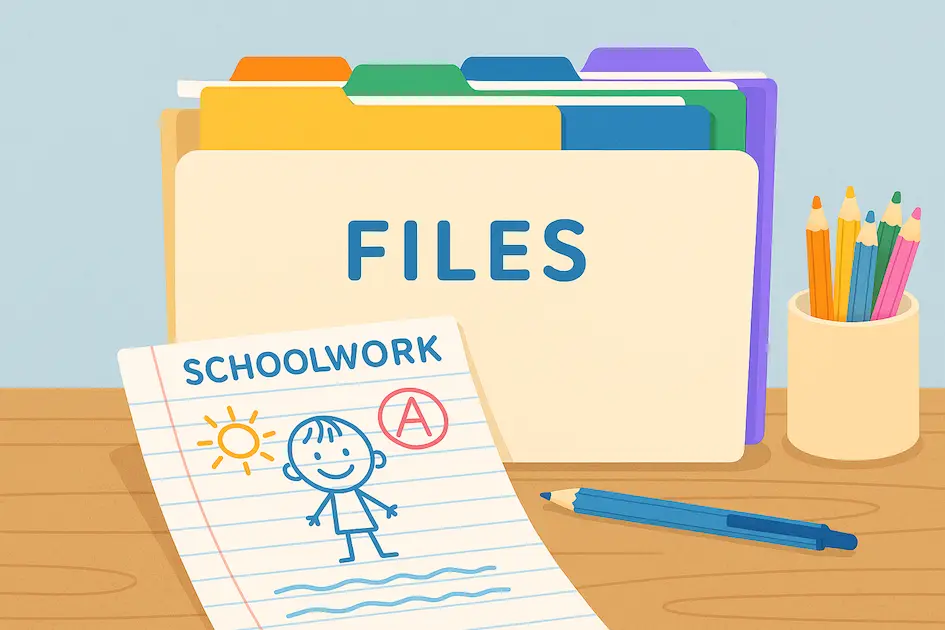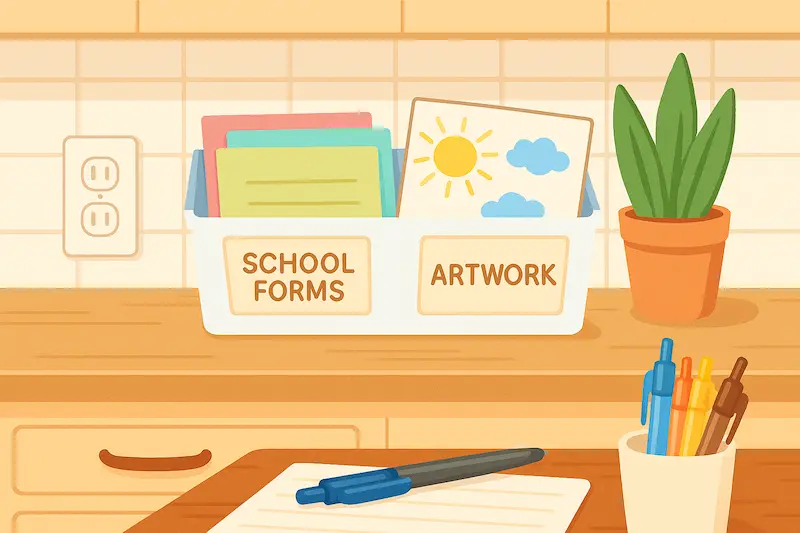How to Organize School Papers at Home Without the Pile-Up
It starts with one spelling test on the fridge… then another… and by October, your counters are buried in permission slips, math worksheets, and scribbled artwork. Sound familiar? Learning how to organize school papers at home is one of the most useful things you can do to reduce stress and keep your space calm and clutter-free. With a few simple systems, you can tame the paper chaos — without tossing out every doodle or important document.

What We’ll Cover
- Types of school papers you’ll want to organize
- Smart systems for sorting, storing, and displaying
- What to keep vs. toss (without guilt)
- Simple tools to help you stay on top of it all
Step 1: Know What You’re Dealing With
Before you can create a system, it helps to understand the kinds of papers your child brings home. These typically fall into a few categories:
- Important forms: permission slips, field trip notices, report cards
- Reference materials: school calendars, login info, class newsletters
- Completed work: worksheets, quizzes, essays
- Keepsakes: artwork, poems, milestone projects
Each type may need a slightly different solution — but grouping them helps you plan efficiently.
Step 2: Set Up a Drop Zone
One of the best ways to organize school papers at home is to start with a designated drop zone. This is a consistent spot where all papers go when they enter the house — no more scattering across the kitchen counter or dining room table.

Use a desktop file sorter, magazine holder, or hanging wall organizer labeled with each child’s name. Make it easy for your child to drop off their papers as part of their after-school routine.
Quick Tip: Keep this zone near the backpack station so it becomes part of the daily unpacking process.
Step 3: Create a Simple Sorting System
Once papers land in your drop zone, they need to move somewhere. Try a weekly review to sort papers into three basic categories:
- Take Action: Needs signature, return, or follow-up
- Short-Term Save: Study guides, upcoming assignments
- Long-Term Keep: Report cards, standout work, keepsakes
You can use folders, stackable trays, or a labeled drawer for each group. Just don’t overcomplicate — your system should work even on busy days.
Step 4: Display What Matters
Showcasing your child’s work makes them feel proud — and it helps you avoid saving every single thing. Try a rotating art wall using clipboards, string and clothespins, or a magnetic board. Limit it to 3–5 items at a time and switch things out monthly.
“When kids know their work is valued, they’re more likely to keep their space organized too.”
Step 5: Store and Archive the Rest
For papers you truly want to keep, use an expandable file folder, labeled binder, or document box. Create a system by year or grade level — one folder per school year is often enough. Slip in a few writing samples, report cards, and artwork highlights.
If you’re tight on space, scan or photograph favorite items and store them digitally. Apps like Google Drive or Dropbox work great for this. You can even create an end-of-year photo book with the best work captured.
Step 6: Know What to Let Go
You don’t need to save every worksheet. In fact, most experts agree that 80–90% of daily schoolwork can be recycled after review. Focus on progress over volume — keep work that shows growth, creativity, or sentimental value.
Tools to Help You Stay Organized
You don’t need fancy bins, but a few helpful tools can make your system last:
- Magazine holders or file sorters (1 per child)
- Label maker or printed folder tabs
- Wall-mounted organizers near your launch pad zone
- Clear plastic boxes for long-term storage
- Digital scanner app for archiving special projects
Final Thoughts: Keep It Simple and Doable
The trick to managing school paper clutter isn’t perfection — it’s having a system that works even when life gets busy. By creating a drop zone, sorting papers weekly, and saving only what truly matters, you can organize school papers at home without feeling overwhelmed.
Need help getting your home ready for the school year? Check out our guide on how to set up a homework station that makes after-school routines easier too.
